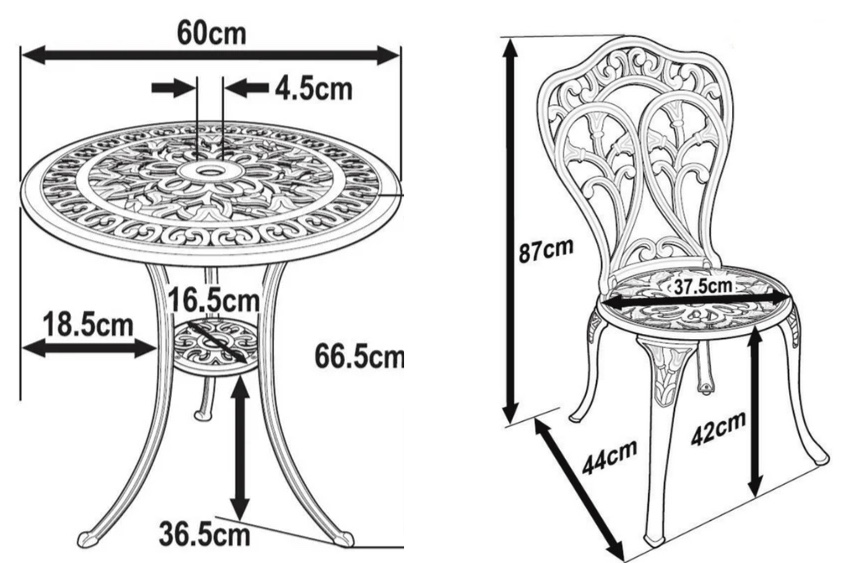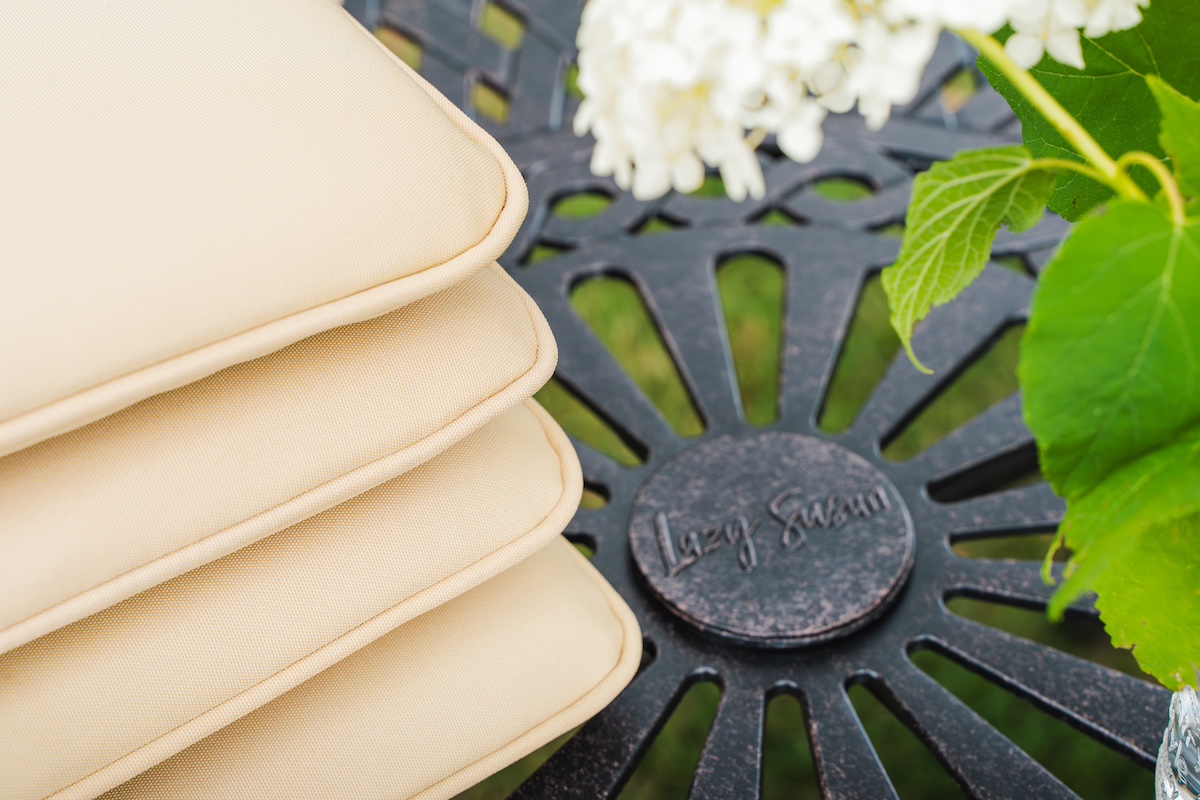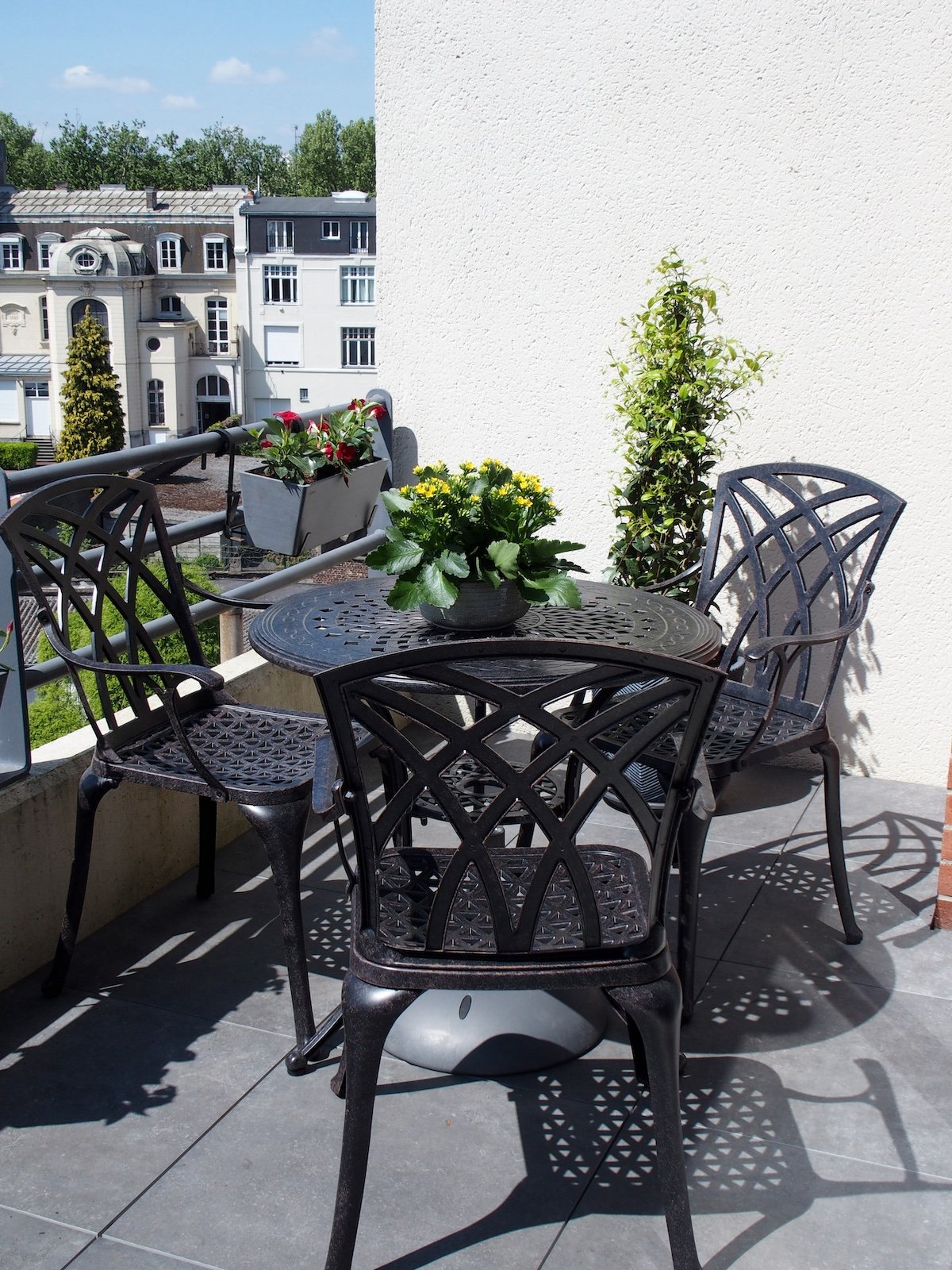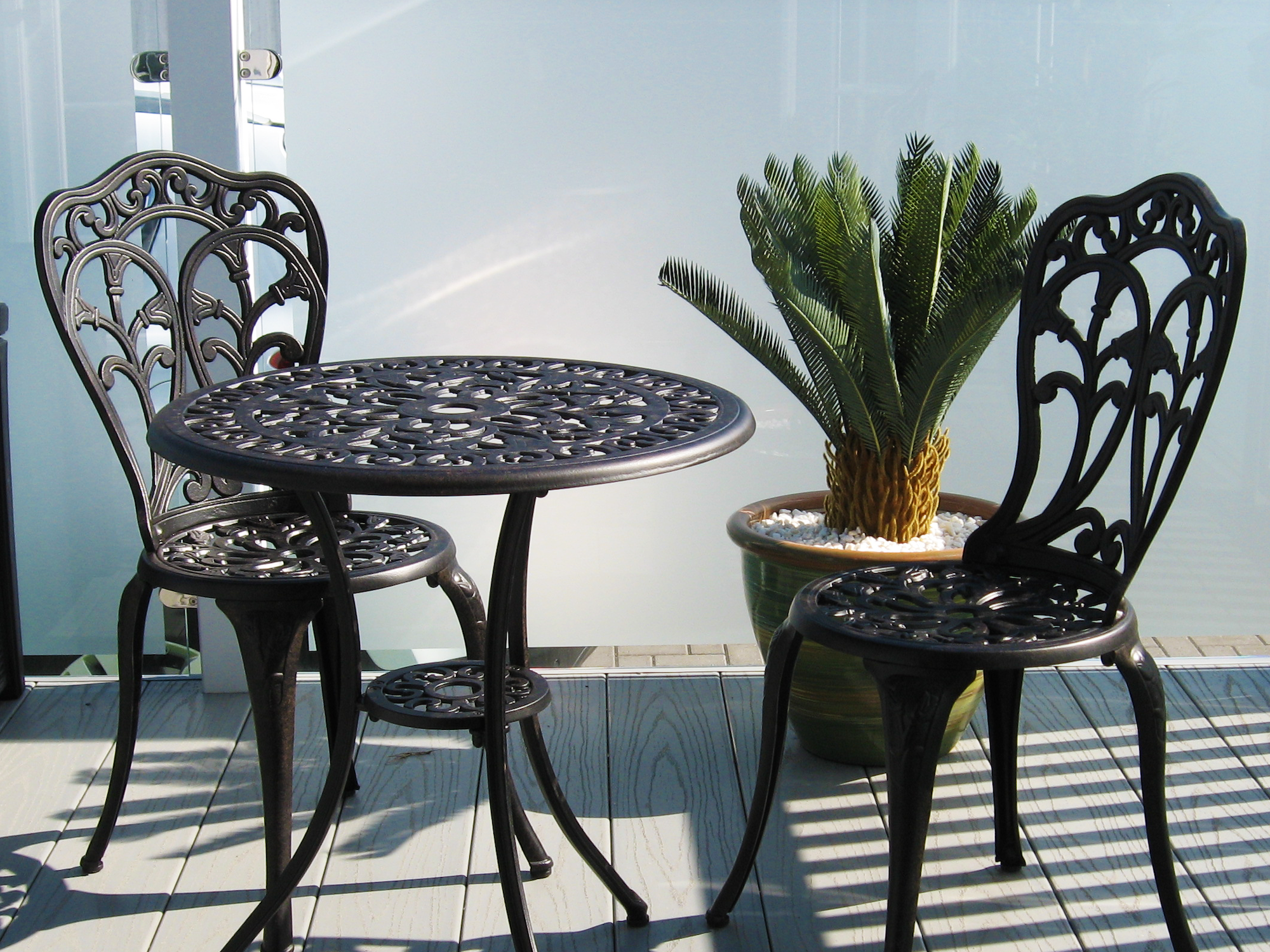Measuring your balcony accurately is crucial when selecting a new Balcony Furniture Set to ensure that the pieces fit well and function within the available space.
It is especially important if you’re working with limited space (common with modern apartment-style balconies), and whilst the process is much the same as if you were shopping for a deck, patio, or terrace, there are a few important additional factors you must consider regarding balconies.
Failure to measure can result in a set or pieces of furniture that don’t fit the space or function correctly when in situ. We want the space to look good and be comfortable to spend time on, so measuring before buying is essential for several reasons:
- Fit
Measuring the dimensions of your balcony helps to ensure that the furniture you choose fits and functions within the available free space. - Proportion
It also ensures that the pieces of the Balcony Furniture Set are not too large or too small for the balcony, therefore maintaining a balanced and proportional look. - Flow
Taking accurate measurements allows you to plan the arrangement of furniture in a way that facilitates easy movement around the balcony when in place. - Function
Knowing the size of the balcony will help you to select furniture that suits its intended function. For example, if you're buying a Bistro Set from us, you want to ensure there's enough space for chairs to be pulled out comfortably, etc. - Look
Measuring your balcony will help you to better visualise how different sets or pieces will look in the space. It prevents the common mistake of buying furniture that is too large for the free space you have, making the balcony feel cramped, or too small, making it look empty and uninviting. - Access
Knowing the dimensions of doorways, hallways, and other entry points is also crucial. It ensures that the furniture can be brought onto the balcony without difficulty. There's no point in buying a beautiful outdoor sofa if it can't get through the doorway and outside. - Layout
Carefully measuring the balcony will allow you to plan the overall design and layout of the space. It helps you to decide where each piece of furniture can go, experiment with different solutions before you commit to buying, and ensure a harmonious and functional arrangement.
Our 13 steps to measuring your balcony for new furniture

At the end of the day, accurate measurements will help you avoid the inconvenience of buying a Balcony Furniture Set that doesn't fit and then having to deal with returns or exchanges.
Our simple 13-step process will save you time, money, and the hassle of dealing with the logistics of returning a large bulky item:
1. Measure Overall Dimensions
With a laser or tape measure, measure the length and width to determine the overall dimensions of your balcony. Note them down on a piece of grid paper to create a to-scale plan.
2. Consider the Shape
Take note of any irregularities in the shape of the balcony, such as corners or protruding columns, as these will impact where you can put the furniture. Mark them down on your grid paper.
3. Account for Door and Window Placement
Measure the distance from the edges of the balcony to any doors or windows. Ensure that the placement of furniture allows for easy access to these openings and there are no overhangs or obstructions to movement.
4. Note Obstacles, Fixtures & Fittings
Identify and mark down on your plan any other permanent fixtures like railings, pillars, or built-in features. Measure the distances between these elements and the edges of your balcony and add them to your plan.
5. Determine Clear Pathways
Measure clear pathways or walkways on the balcony. Allow for enough space for comfortable movement around the furniture and the rest of the space.
6. Measure Vertical Space
Not an issue in most gardens or on most patios but it can be on a balcony. Measure the height from the floor to any overhead structures, like a roof or the balcony above yours. This is especially important if you plan to include hanging or suspended furniture.
7. Consider Furniture Type & Dimensions

If you have a specific type of furniture in mind, such as a bistro set or lounge seating, consider the space each piece of furniture will need. Check the dimensions of each furniture item and factor in the space you need to safely and comfortably move around them. Dimensions for our Tulip Bistro are shown above and can be found for each product in our shop.
8. Factor in Cushion Space

If you plan to use cushions or pillows on the furniture, consider any extra space they will occupy. Account for the cushion depth and any overhang. This is not an issue with our collection as all our Bench & Chair Cushions (shown above) are designed to fit perfectly to the seat.
9. Think About Functionality
Consider how you want to use your balcony. If it's primarily for dining, make sure there's enough space for a table, the required number of chairs, space to move them in/out, sit, etc. If it's for lounging, prioritise comfort and check there’s sufficient legroom.
10. Account for Folded, Stacked or Stored Dimensions
If you are considering foldable or stackable furniture for easy storage, then measure the dimensions when the furniture is folded or stacked to check it will fit where you want to store it when not in use.
11. Check for Weight Capacity
Another step that is not an issue on the ground is weight. If you plan to place heavier items, such as a large planter or furniture made from heavy materials such as wood or iron, then you need to ensure that your balcony's weight-bearing capacity can accommodate them. The cast aluminium we use is robust and weather-resistant but relatively lightweight. The weight for all of our furniture can be found in our shop under the specification tab. The combined weight of the table and 2 x chairs in our Tulip set is 13.1 KG.
12. Photograph Your Balcony
Take some photographs of your balcony from different angles. This will help you visualise how the furniture could fit and how it will impact the overall look of your space. We would then draw this all out to scale on grid paper to see how the furniture will fit in function. Alternatively, you could feed all the details into a garden or interior design app such as iScape or Planner 5D to see what will and won’t work.
13. Verify Local Regulations
Be aware of any local regulations or building codes that may restrict certain additions or modifications to your balcony too. They are often different to other types of outdoor space. For example, a fire pit or patio heater is often not permitted, so it pays to check first before you install anything.
By carefully measuring your balcony and considering these factors, you'll be better equipped to choose the right Balcony Furniture so that not only looks great but fits and functions in the space.
If you have any photos of your Balcony Furniture Set in your garden or on your patio, we’d love to see a few for our Do Some Good charity campaign. You can tag us @LazySusanFurniture on Instagram or Facebook or Upload Here.
Related Articles
- The Lazy Susan guide to balcony furniture
Balconies have become a popular architectural feature in UK homes, so we’re taking an in-depth look at how to measure, choose, style and maintain balcony furniture…
Read More - How to style your outdoor space with small balcony furniture
We have compiled 5 key decorating tips to help you style your outdoor space with small balcony furniture…
Read More - Our top 10 balcony furniture ideas for summer 2024
The Lazy Susan team is taking a closer look at our top 10 balcony furniture ideas for summer 2024…
Read More - How do you protect and secure your outdoor balcony furniture?
Our product development team are discussing how to maintain, protect and secure your outdoor balcony furniture…
Read More





